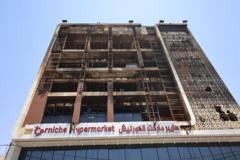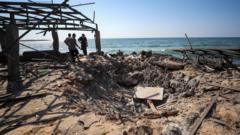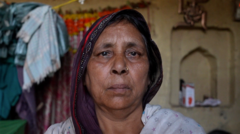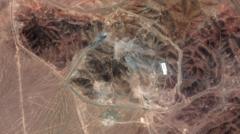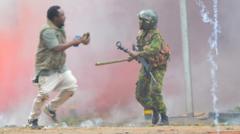As a significant earthquake rattles Southeast Asia, the situation in Myanmar worsens with casualties and limited information due to state censorship.
**Major Earthquake Strikes Central Myanmar, Casualties Rising**

**Major Earthquake Strikes Central Myanmar, Casualties Rising**
A powerful 7.7-magnitude earthquake has caused extensive damage in Myanmar, with rising death toll and widespread panic.
A 7.7-magnitude earthquake struck central Myanmar on Friday, generating widespread shockwaves across Southeast Asia and resulting in numerous casualties and significant destruction. At least 23 individuals are confirmed dead, with more casualties likely as the rescue operations assess the situation, particularly in Mandalay, Myanmar's second-largest city.
The quake, which happened around 12:50 p.m. local time, was felt strongly in neighboring countries including Thailand and Vietnam. An aftershock of magnitude 6.4 followed approximately 12 minutes later, further complicating rescue efforts.
Reports indicate at least 20 fatalities in Myanmar and three in Thailand, with fears that these numbers could escalate as access to the most affected regions remains limited due to severe restrictions imposed by Myanmar’s military government. The controlled flow of information adds to the challenges faced by rescue teams and medical facilities, where injured individuals are pouring in.
The epicenter was located near Mandalay, roughly 10 miles northwest of Sagaing. As electric and telecommunications infrastructure is compromised, emergency services are scrambling to provide aid to the affected regions. Residents have reported buildings swaying dangerously, and many have evacuated from damaged structures to safer areas.
Information remains sparse due to the state’s strict control over communication, leaving many communities unaware of the full extent of the damage. The international community is monitoring the situation closely, and offers of support and aid have begun trickling in, although logistical challenges persist.
While the shake intensity was categorized as "light" on the Modified Mercalli Intensity scale, the impact on densely populated cities demonstrates the vulnerability of the region to seismic events. Emergency services continue to work tirelessly in the effort to assist those in need amidst a rapidly evolving and uncertain disaster response scenario.
The quake, which happened around 12:50 p.m. local time, was felt strongly in neighboring countries including Thailand and Vietnam. An aftershock of magnitude 6.4 followed approximately 12 minutes later, further complicating rescue efforts.
Reports indicate at least 20 fatalities in Myanmar and three in Thailand, with fears that these numbers could escalate as access to the most affected regions remains limited due to severe restrictions imposed by Myanmar’s military government. The controlled flow of information adds to the challenges faced by rescue teams and medical facilities, where injured individuals are pouring in.
The epicenter was located near Mandalay, roughly 10 miles northwest of Sagaing. As electric and telecommunications infrastructure is compromised, emergency services are scrambling to provide aid to the affected regions. Residents have reported buildings swaying dangerously, and many have evacuated from damaged structures to safer areas.
Information remains sparse due to the state’s strict control over communication, leaving many communities unaware of the full extent of the damage. The international community is monitoring the situation closely, and offers of support and aid have begun trickling in, although logistical challenges persist.
While the shake intensity was categorized as "light" on the Modified Mercalli Intensity scale, the impact on densely populated cities demonstrates the vulnerability of the region to seismic events. Emergency services continue to work tirelessly in the effort to assist those in need amidst a rapidly evolving and uncertain disaster response scenario.

